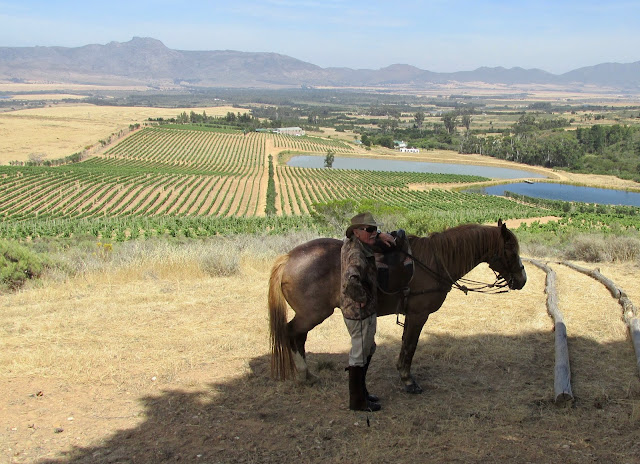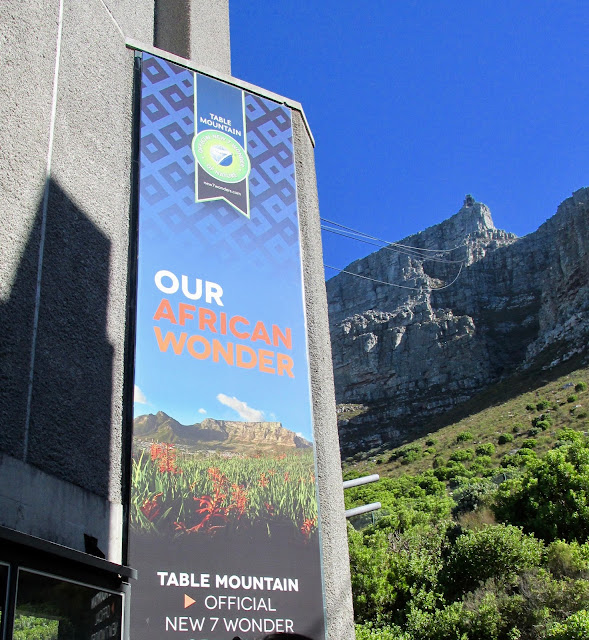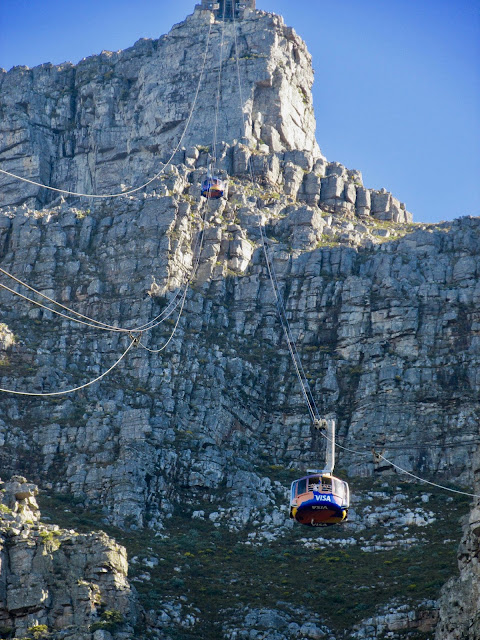Long before the internet, twitter accounts, and FB, we heard of the horrors of apartheid. But those horrors were half a world away, and in the US, in the 60's, we had our own horrible problems to contend with. Who knows, maybe some even consoled ourselves with something along the lines of 'well, at least we're not as bad as South Africa . . . ' I'm sure there's a moral or philosophical term to describe that kind of thinking or rationale . . .
But here we are, 50+ years later in South Africa about to visit a wee museum close to the CBD and its sole mandate is to preserve the history of a local neighborhood known as 'District Six'.
District Six was a neighborhood in Cape Town that was non-white. It was a real 'hood - descriptions of it made me think of some of the old neighborhoods in NYC before gentrification - Little Italy, Chinatown, Bed-Stuy - not all sweetness and light by any means but nonetheless truly home for thousands of people who'd been pretty much ostracized or ghettoized from the larger city.
What was different about District Six in Cape Town was that in the early 1960's the Cape government declared District Six a 'whites only' zone and announced that the residents - all 60,000 of them - were being relocated to Cape Flats, miles away, far from everything they'd ever known as home. Every home and business was bulldozed to the ground; one church was left standing. Forced relocation.
The special tragedy of all this is that the land is still vacant - red earth and one church where this once vibrant neighborhood stood. One of the displays I read said that the government wanted the land for industrial/commercial development in conjunction with increasing port trade. Obviously that didn't happen.
It took until 2005 for the government to begin exploring the process of restitution. It's still on-going, and this Museum is one of the products of that effort. On the floor is a map of D6 where former residents have identified their homes and left mementos of their life there.
Richard Rives, a South African writer who I'd never heard of, has written extensively about life during the time of apartheid and is quoted frequently in the museum displays.
I am constantly humbled by the resilience and compassion that South Africans - both black and white - have displayed on this long journey. Most everyone we've talked to love their country, are cautiously optimistic about its future, and confident that despite the current political climate, things will improve. It is truly a work in progress.
One of the most impressive markers for their progress is Nobel Square at the Victoria and Albert Waterfront in Cape Town. It is a larger than life sculptural memorial to the four Nobel Peace Prize winners from South Africa: Albert Luthulu, Desmond Tutu, FW de Klerck, and Nelson Mandela. These four men represent the twentieth century struggle of South Africa. In fact, when Luthulu was awarded the prize in 1960, as a black man he had to get special permission to leave the country to attend the acceptance ceremony.
While we're at the V&A Waterfront, we have to take in a couple of the tourist attractions, most notably the Two Oceans Aquarium. We were a bit ho hum about going, but when Deb and Paul came home raving about it, we said - 'let's give it a go'. So glad we did! What a splendid job they've done.
Little kids and big kids loved this!
We spent the longest time watching these marvelous wee creatures who are the only ones in nature where the male gives birth! Yup - they do and they come to life in the male's womb (?) and then emerge as teeny, tiny seahorses. We were so hoping one of these guys languishing on the bottom of the display were about to give birth but it looked like a long labor.
Then we met Bob, the sea turtle.
To look at him now, you never know that he arrived at the Aquarium in very bad shape - not eating, lethargic, and totally distressed. No wonder! After loving care and lots of good, healthy turtle food, Bob excreted the contents of this tray! Certainly made us want to swear off all forms of plastic forever!!!
Then there were the jellies - no, not jellyfish because they are not fish.
In fact, they don't have a brain, a heart, or a spine but what havoc they can wreak. A smack of jellies can stop a battleship, and one species is the most venomous creature in the world.
And last is the eerie, scary ray . . .
So very glad we took Deb and Paul's advice and went - absolutely wonderful!
On the way home, we pass harbor seals lolling and frolicking . . .
And we also happen on a group of jump ropers who were absolutely spectacular! There were nine young men, a drummer and their coach. These fellows were amazing.
It's no wonder Cape Town is known as the 'jewel of the Cape'!
Can't leave this post or Cape Town without relating one hysterical incident. On the way home from the Waterfront, we decide to try and find my church which has an address of 60 The Strand. We know where The Strand is so #60 should be pretty easy to find - right? Well, there is a promenade at that address with lots of wee shops, only some of which have numbers.
We're standing on the street, puzzling as to what to do next when one of the local 'Tourist Police' approaches us and asks if he can help. Before we can politely decline his offer, a whole car of them appears and the driver commands: 'You're old, get in!'
The driver orders two of his fellow officers out of the back seat, leaves them standing on the street, and off we go! We have no choice but to explain what we're looking for and the remaining two officers and driver are all eyes - where is the church we're seeking?? While all eyes are searching, they receive a radio call about a robbery in progress at a bank! This is our chance - we're out of the car in a flash, with lots of 'thank you's' and are just a block or so from we started!!
Never did find the church.






















































